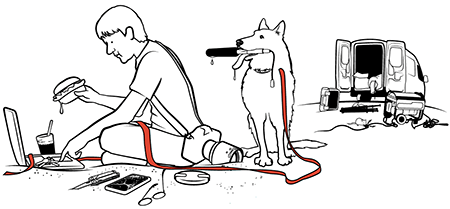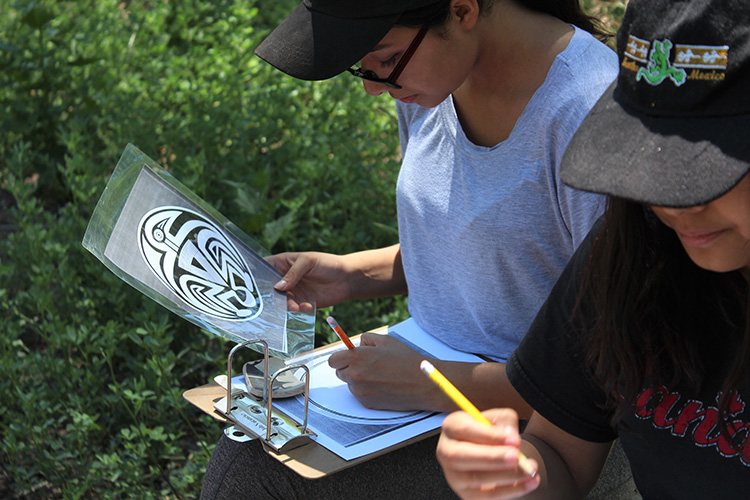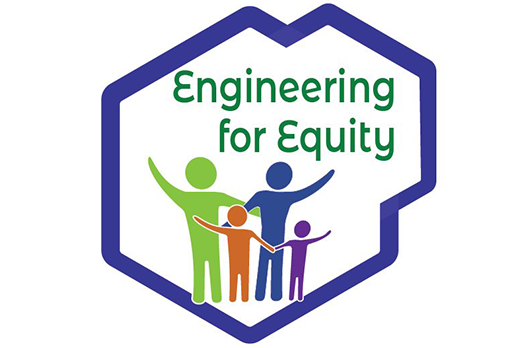TERC Blog
Sound Travels: Greetings from Detroit
Fall 2023
This is part of an ongoing blog series that follows the Sound Travels researchers as they explore the visitor experience in science centers, nature centers, parks, and zoos across the country.
Sound Travels researchers followed up on our summer visits to the North Park Village Nature Center in Chicago (which you can read about here ) with a two-day immersive experience in Detroit, MI. The D delivered! Sound Travels researchers met with Detroit partners Ériu Martinez from the Great Lakes Audubon’s Wild Indigo program and Billy Mark, sound artist and co-founder of the Neighborhood Art School. Billy and Ériu will be investigating “sonic agency.” This is a new idea for some of us in the Sound Travels project. Below the team writes about how “sonic agency” will inform the Sound Travels research projects.
Greetings from Detroit
Sound Travels Detroit partners Ériu Martinez and Billy Mark work in the city with residents of all ages. Through art and increasing awareness of easily accessible natural experiences, they will be exploring the ways humans can have sonic agency. Billy reminds us that we can change our sonic environment by moving closer or further away from a sound source and that many times every day we make such choices. Through turning switches off and on, touching, stepping, and striking various surfaces, we add sound to the environment. Meanwhile, Ériu brings an interest in restorative practices, reconnecting people to lands that were taken, owned, controlled, and exploited by white settlers. Ériu invited us to listen with our whole bodies—tuning into vibrations, collecting sounds with the hairs on our arms or the backs of our necks. This practice is one way to fill in gaps–to address the challenge of hearing what you cannot see and seeing what you cannot hear. More on this in a future blog.
Welcome to the Neighborhood Art School
In the Piety Hill neighborhood of Detroit, this space hosts workshops offered by community artists. Youth and adults stitch fabric, stitch sounds together in a sound studio, create theater pieces, and cook together.
One phrase stands out from this visit: Collective Composition
Billy invited Sacramento Knoxx, a cultural activist whose versatile background with different forms of music allows him to blend traditional and contemporary styles, creating dynamic storytelling experiences with live music performances, dancing, and video projections that take audiences on a participatory journey and a creative experience. Sound Travels met him in his capacity of workshop leader and master of music sampling, sequencing, mixing, and beat-making. He led a half-day workshop for our group. During the workshop, we formed two groups to find sounds, create a composition, play our music for each other, and make recordings. As we debriefed, Sacramento Knoxx spoke about the importance of composing in collaboration with allies in a relationship of sound.
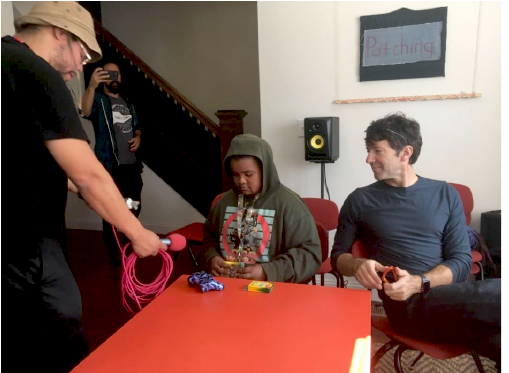
Photo credit Martha Merson
Through our sonic agency, we gave inanimate objects in the room a sound profile, e.g., percussive sounds, twangs, and strums—inanimate objects in the space produced sound.
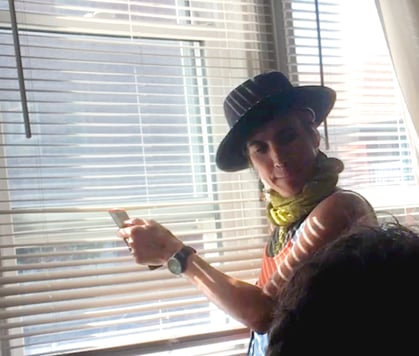
We also noticed the way that a certain phrase or sentence might be spoken lent itself to becoming a chant. As a phrase is repeated, the rhythms may become more pronounced. We played with one such phrases, lifted from Ériu’s call placing an order for a specialty pizza:
“Let’s make that all vegan.”
By drawing our attention to our ability to create music out of the sounds around us, Knoxx supplied us with another vantage point to view our sonic agency. We not only listened closely to the sounds in our environment, we began to interact with them, test them, delight in them, and compose them. This active engagement with the sound world that envelops us reminds us that we do not simply passively experience the effects of sounds around us, but that, to the contrary, we make sounds, and with intention, can work in concert with our environmental noises to, in this instance, create music.
After the group performances, Daniel Shanahan (Northwestern University, co-PI) noted that “People get more involved and interested when things aren’t perfect or expected. If there was an established beat and it was too predictable, then there was someone who interrupted it.”
Through this exercise, we replicated moments in the history of music—creating percussive sound and rhythm, adding melody to rhythm, improvising with others.
In an afternoon workshop, Billy shared an instance of sound layering. The Neighborhood Art School is training youth to record elders’ stories about the neighborhoods where they grew up. Of course, the stories are situated with today’s soundscape in the background.
A Soundmap Interview
In the afternoon, we experienced the recording of a soundmap interview. These soundmaps use a 3d microphone to record the conversation and ambient sounds and then geotags that recording so that anyone who uses the echoes.xyz app can relisten to it anytime in that place. Also, if the listeners have spatial audio headphones when they listen to the soundmap, as they turn their heads, different parts of the landscape will grow louder or quieter as they would when we move our heads in everyday life.
We not only listened closely to the sounds in our environment, we began to interact with them, test them, delight in them, and compose them.
Photo credit Justin R. Meyer and Martha Merson
These soundmap interviews present an unusual opportunity to listen in on how sound influences informal learning. Ultimately, an audience of people listening asynchronously can tune into three soundscapes: their own in real-time, the sounds at the time of recording, and the soundscape referred to in the story.
For this interview, which is a part of the larger “Coffee with Elders” soundmap project, Billy introduced the Sound Travels group to Mr. Smith, who attended the Fairbanks Elementary School in the neighborhood decades ago and volunteered there before the school was shuttered and fences erected around the grounds. In a tight circle under a warm September sun, we listened intently. [See photos below] The memories of a lively school and caring teachers, a variety of pitches, cadences, and intensity in the past contrasted with our experience. The whoosh of traffic from the John C Lodge Freeway was a prominent sound.
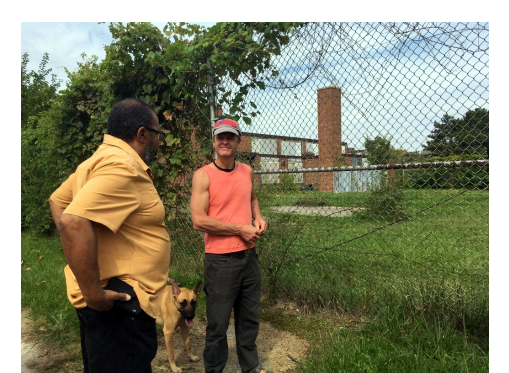
Photos credit Martha Merson
In reflecting on the experience, we noted that it was difficult to hear with the highway noise.
Though none of us wanted to move away from the story, we noted afterward that trying to block some noise while listening to Mr. Smith felt tiring. This experience led to questions about how children’s learning is impacted by sound. Researchers have shown that when schoolchildren assigned to a room next to an NYC elevated train were moved to the other side of the building, they did much better in reading. In an informal learning setting, visitors might leave a noisy area. Do visitors/listeners face a forced choice–giving up on a story or compelling content when they want to interrupt an experience that has a component of auditory overload? How do we begin to account for movements that could fall under sonic agency during visits to informal spaces? How do informal learning institutions and the larger world make it more or less possible for us to author our own sonic experiences?

Photo credit Martha Merson
As ever, Sound Travels team members carry questions and new intentions to the next phase of the project—matching research questions, instruments, with programs and visitors. Stay tuned for more in 2024.
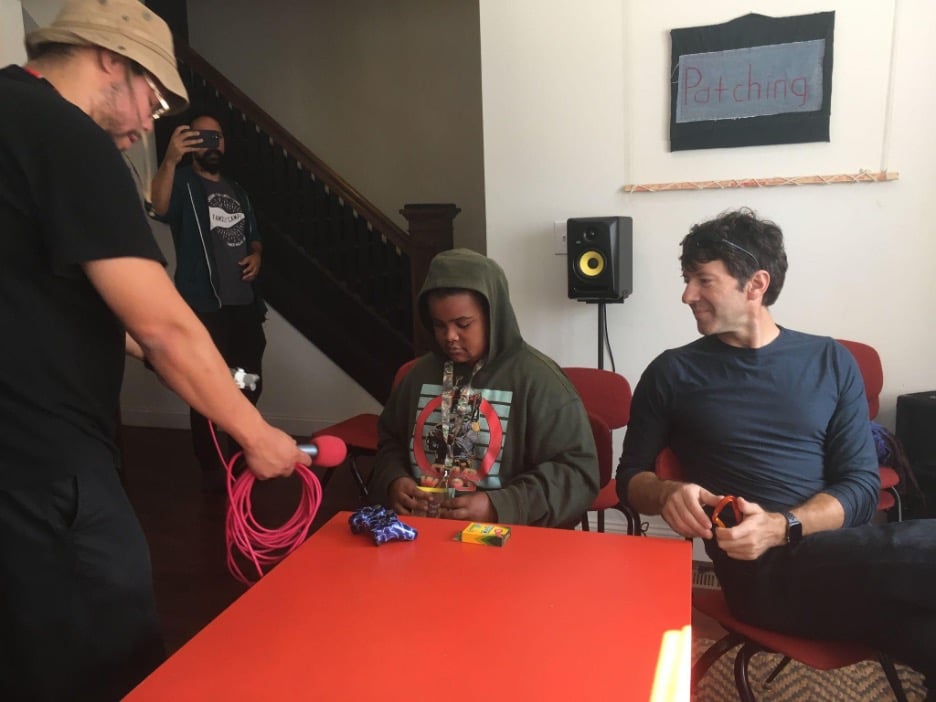
Contributors Martha Merson, Nickolay Hristov, Billy Mark, Justin Meyer, Laura Weiss






